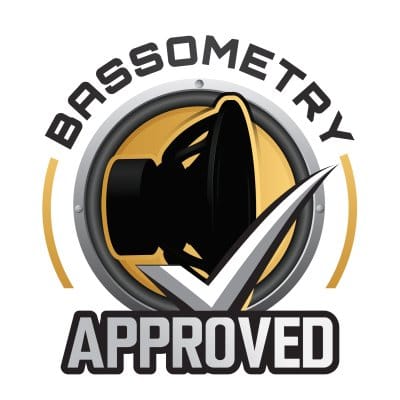Review: Beyma 12LEX1300Nd
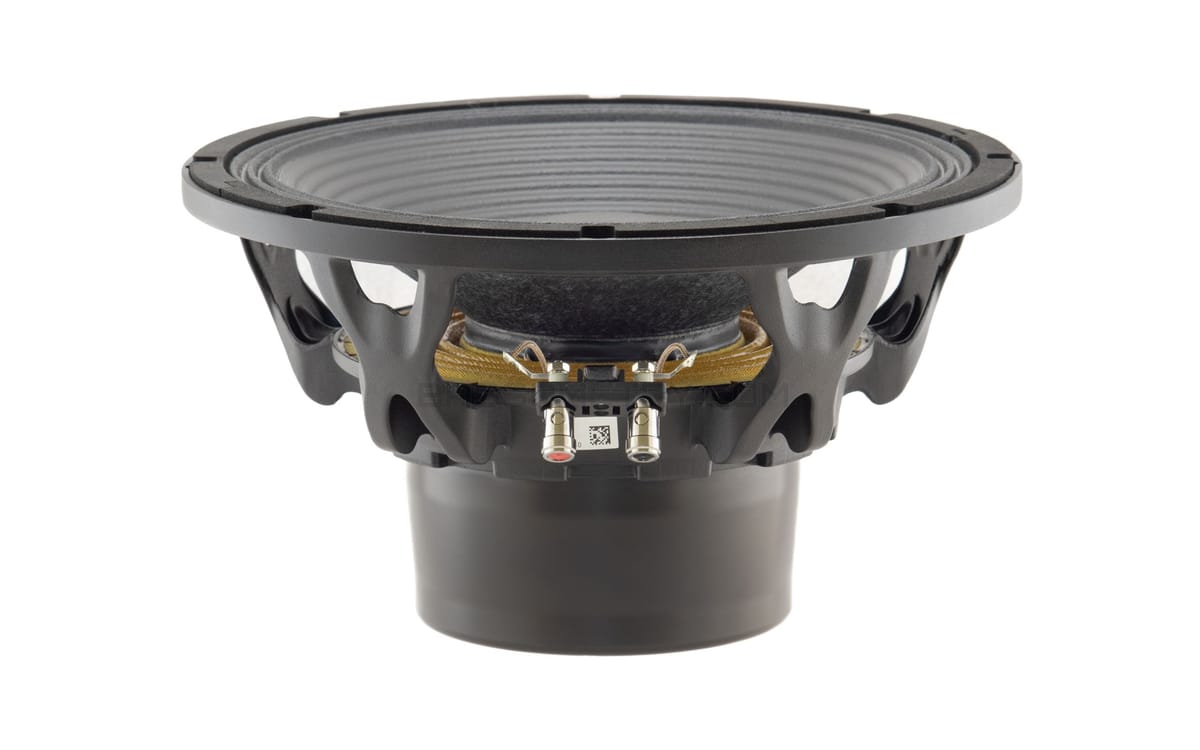
There’s no shortage of high-wattage drivers with flashy specs and boasted features. The question is: Does the 12LEX1300Nd just look the part, or can it actually deliver? Let´s have a look into such serious work machine.
This review was sponsored by MS-Sound (www.ms-sound.cz), who kindly provided the speaker for testing. While sponsorships are very welcome, all technical results and measurements remain completely independent and unbiased.
Looks and build quality:
Sharing the basket and cone design with its ferrite brother 12LX1000Fe, I will reiterate the design description of this unit. The 12LEX1300Nd clearly positions itself as a high-end subwoofer performer. With its cast aluminum frame featuring distinctive X-shaped spokes, heavy "wetted look" cone treatment, large motor, and a 1300 W power rating, it fits that category very well. The design feels mature and purpose-built, with a clear focus on professional performance in every aspect.
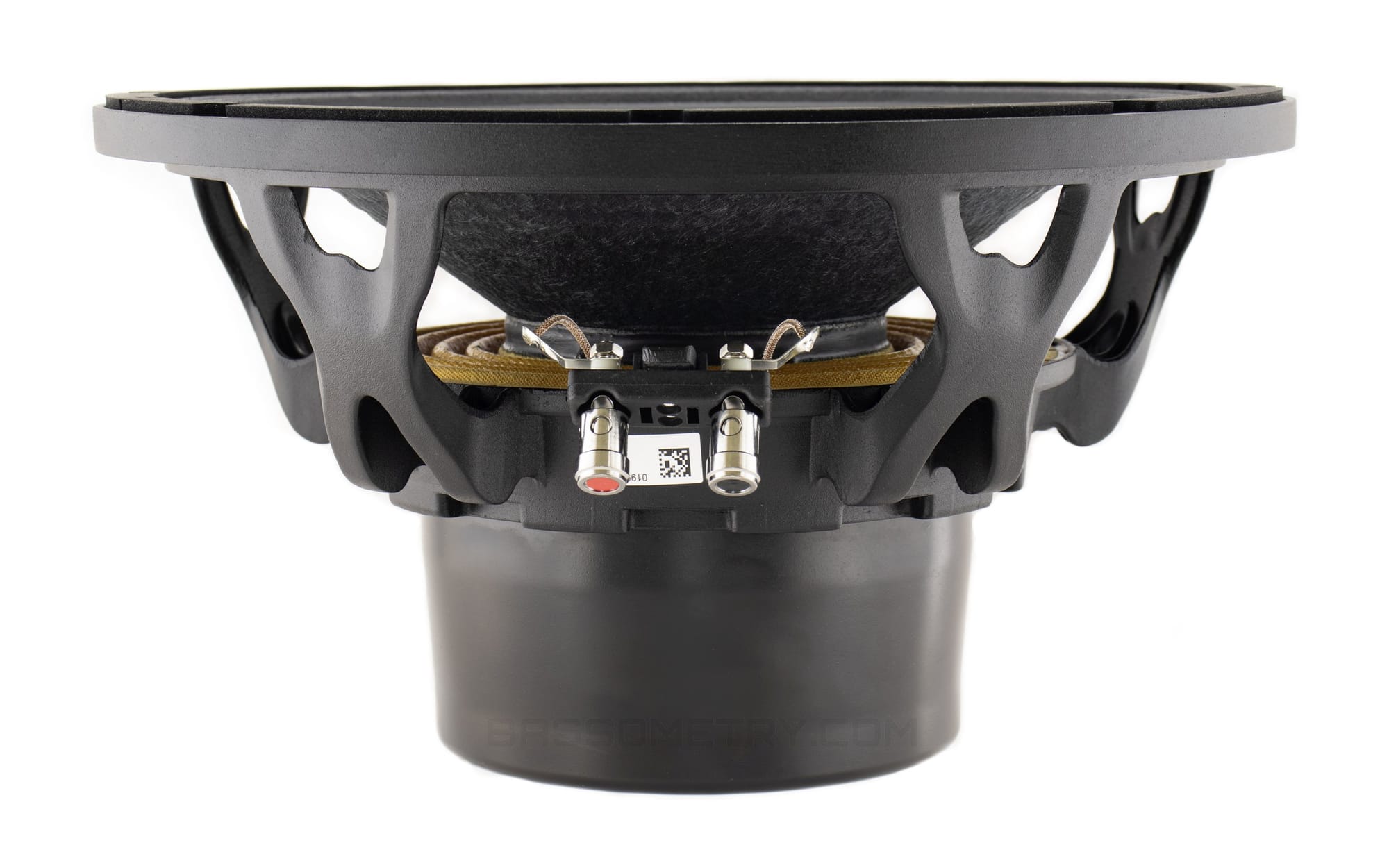
This time, with upgraded 4.0" in/out copper wound voice coil, stabilized by a 7" spider that is infused or soaked with layer of silicone even from the top side. Neck joint between the cone and spider is now additionally reinforced for very demanding applications. Color-coded push terminals connect to in-spider woven tinsel leads. With 5,5" dustcap, helping to further optimize the straight cone integrity. This driver was engineered with some additional "bassgore" in mind. It is a clear upgrade over the ferrite brother.
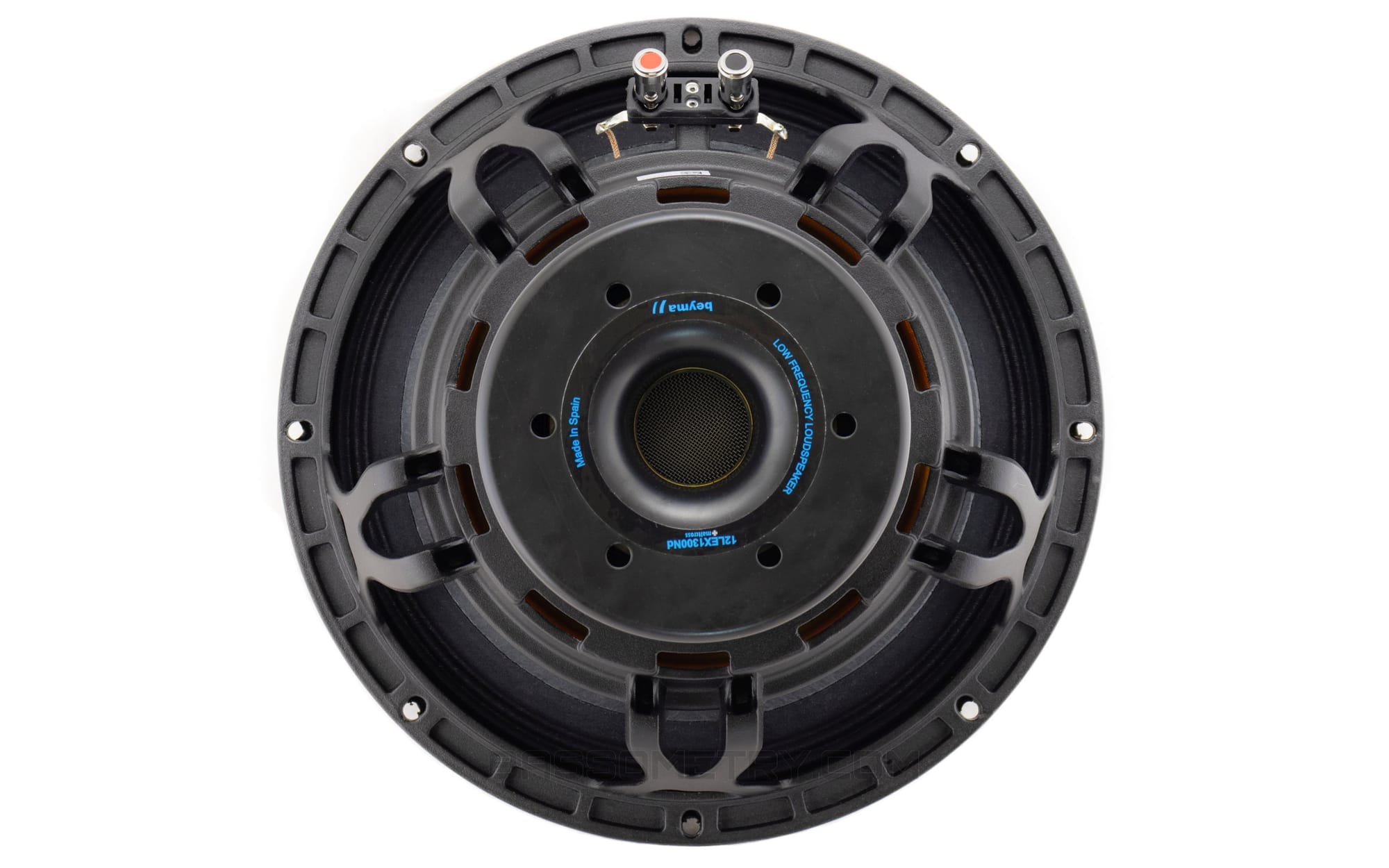
Neo motor structure is built with very similar cooling strategy to the ferrite model, with just two less direct coil cooling vents - six in the case of the 12LEX1300Nd, probably for more forced cool air exchange. As with the 12LEX1000Fe, here also Beyma advertises its Malt Cross® Technology Cooling System, cited from the manufacturer´s webpage: "The Maltcross technology is a forced convection circuit inside the heart of the driver that helps to lower the working temperature of the coil and also acts as a demodulation ring, linearizing the inductance of the transducer."
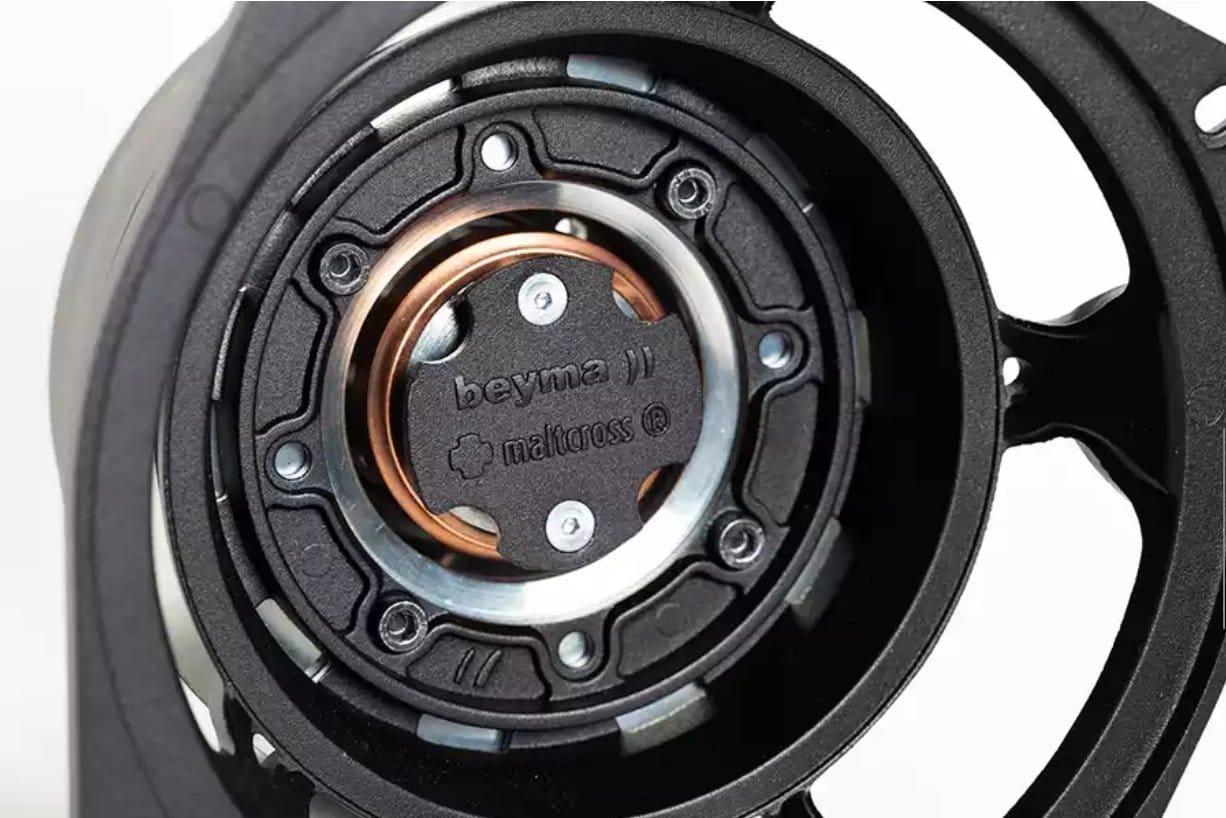
This neo model mentions the addition of aluminium demodulating ring to its motor, for even better performance characteristics. You know a high-end PRO driver when you see it.
Driver specifications:

- Size: 12" type
- Power Handling: 1300 W AES
- Impedance: 8 Ohm
- Frequency Range: 45-1500 Hz
- Sensitivity: 96 dB (1W/1m)
T&S parameters set:
Measured T&S parameters are a fair match for a not very broken-in new unit. Qes and Bl are very slightly below the published specs, but not to a concerning degree. Keep in mind, the driver was measured following an undocumented short torture session during high-power-to-reckless-level listening tests the previous day. We got this piece quite hot, but it did withstand the torture with grace. I would expect that parameters do get a little bit closer to the manufacturer´s specs when it is properly burned in.
The Xmax value includes a “plus” suffix, as the driver performs admirably under overload conditions - maintaining control and composure beyond its rated excursion.
Performance overview and general rating:
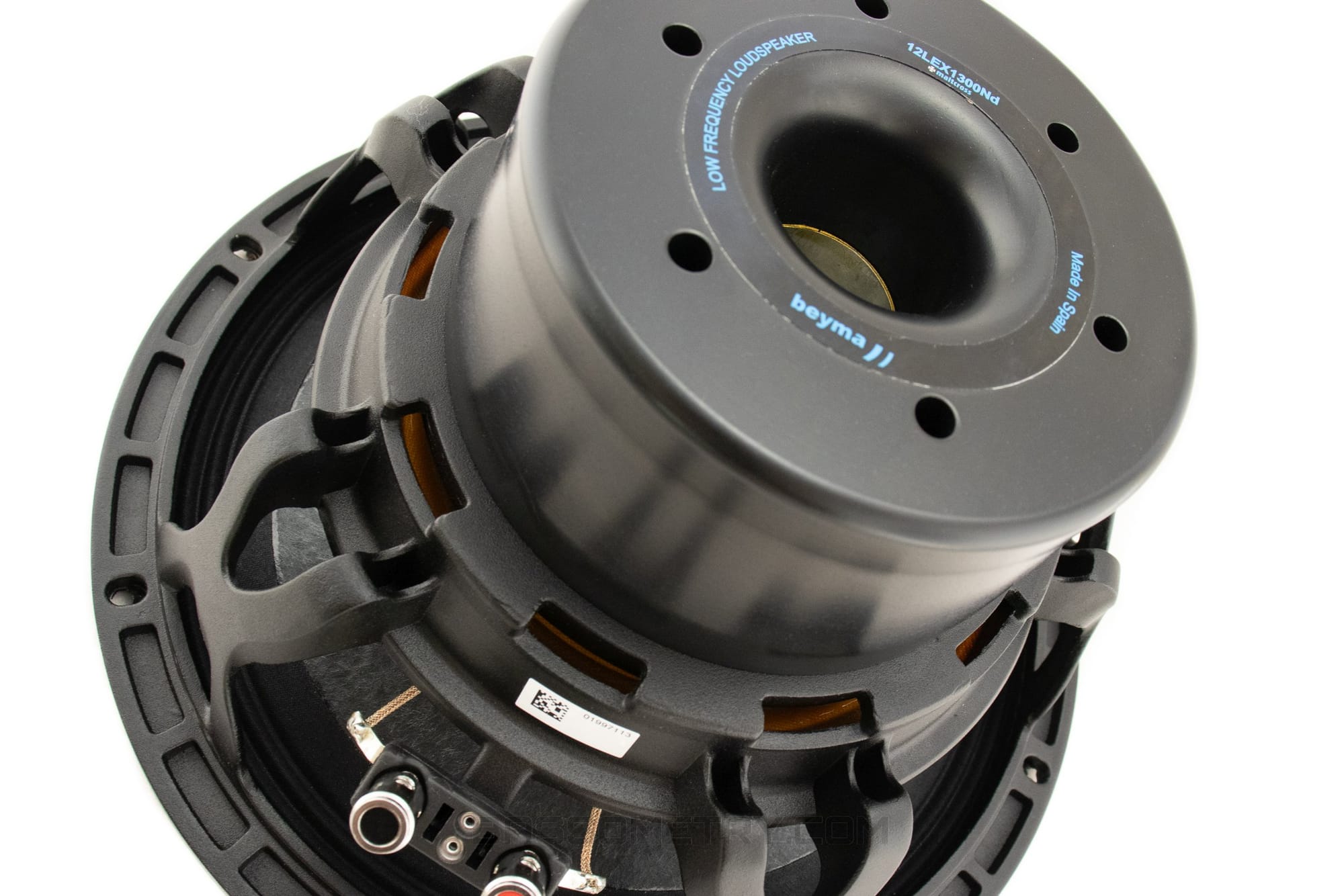
The driver performed well within its specifications. In free air, it sounded strong and snappy; In the test enclosure, it came in on the "hot" side - it played strong with a little additional kick and aggression to it. Expectedly for its properties though. In any case, if needed, this behavior can be tamed with stricter LPF or equalisation. As with most 12" PA drivers with strong cooling, the ratio of mechanical and airflow noise to output SPL can be less favourable - despite design efforts to mitigate this. At full power, some distracting noises are audible. Still within the expected limits for a driver of this size and class. 12LEX1300Nd can be considered a "quieter one". I was very impressed with how quietly it behaved under pure sinewave input. The driver showed excellent behavior overall. If you're specifically looking for a very capable 12" PA bass driver, this one is certainly worth considering.
- Buy if: You want the utmost high end 12" bass driver for PA deployment.
- Skip if: You want to move a lot of air by a single driver cone for little money.
The displacement-to-dollar score makes it clear: this is a driver built for specific applications. I’d not recommend it blindly for general-purpose builds, or for scenarios where displacement to price ratio matters. Once we assign the driver to the performance class and load the cone properly, this issue gets rather resolved.
*The following section is available to Bassometry members only.* (Free sample):
Large Signal Performance Results:

This section presents the driver’s behavior under high excursion and high power conditions, highlighting performance aspects such as distortion, excursion limits and compression. Measurements are conducted using controlled lab procedures to reveal transducer behavior beyond small-signal specs.
For a full explanation of the test methodology, please refer to our Bassonomy section.
Compared to the ferrite brother, the scores look almost like measurement error differences or unit tolerances dispersion, rather than actual model difference. Though you are still getting tad more performance, more power input capability, and more than 2kg lighter driver here. It is not all that big surprise then, that this model breaches into the excellent/hall of fame class in the test results.
Resonance frequency shift of 18.7% and Impedance shift at Xmax of 55.1 % indicate a good balance of cone control and efficiency, slightly steered to the control.
DC cone offset: In this case, negligible. Across the usability spectrum, it was firmly under 5% of Xmax (meaning 0,55 mm here, nearing the measurement error). So, this result cannot be more ideal. Engineers at Beyma certainly had cone control in mind, and that care brought this very exceptional result.
15Hz - 50Hz at Xmax behavior: There was no unstable behavior during high power frequency sweeps, the driver was always under control. Power draw was well within expected limits, securing sustainable operation across the working frequency range at full tilt. The sturdy cone held under high frequency strain. Brief 75 Hz push showed remarkable strength.
THD figures: While figures deep below the resonant frequency outside the usable band were falling into just "good" performance for true subwoofer work, the result for 50 Hz "where bread and butter" is for the driver, is excellent-to-ideal. With 1.1% of mechanical distortion, this indicates that the design has been refined.
Excursion behavior: This unit performed impressively under overload conditions. It comfortably handled a short-term overload of +3dB, and even tolerated an undocumented +4 dB burst without any signs of distress - nasty audible artifacts, mechanical noise, or damage. At that moment, it must have been flying over +-15 mm distances, because +3dB level pushed it into ~14.4 mm one way. Mechanically, the driver maintained distortion levels below 10% to up to 2.2 dB boost over the specified Xmax value.
Mechanical(SPL) compression:
Note that this test reflects an isolated low-frequency scenario. Once the driver is placed in a specific enclosure, the results can vary significantly. However, as a point of reference, this data set still holds substantial informational value and offers useful insight into the driver's raw performance characteristics..
It is not that easy to establish firm control over the cone, while not causing the suspension to eat up too much power from the supplied signal. Beyma did a good job in this department though, allowing this piece to operate with +2 dB overload beyond Xmax before the output level rises slower than input, establishing this point as the limit of its "peak usability", while still maintaining superb control. It shows that this one is a little on the stiffer side, even more prepared for high-power abuse.
Final words: They did it! With a 91.1% performance score and great overload behavior, I believe the driver has made it into the excellent/hall of fame league this early in my review endeavors. There is nothing more specific to mention about this unit, apart from the snappier sound to it, and all the technical praise. MRSP is somewhat higher, you will pay for that last decibel in the output capabilities. But street/retail prices will push it back to sanity again.
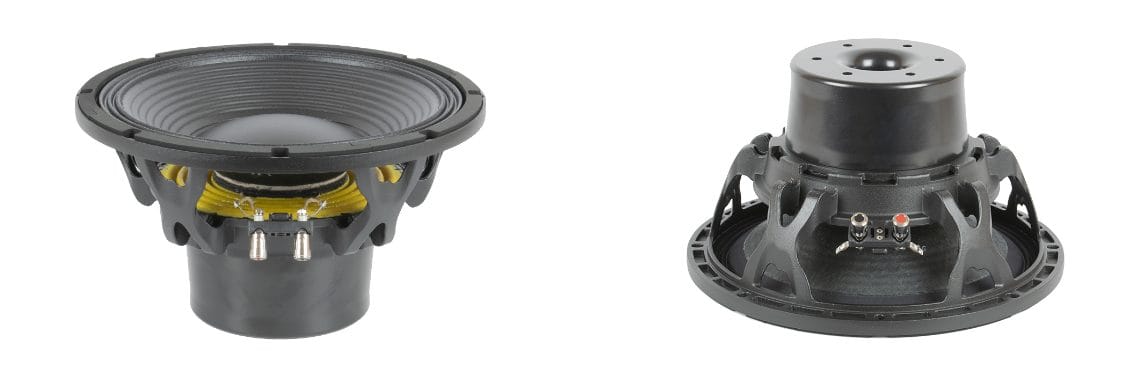
Similarly to its ferrite brother, in our tests, this driver delivered all but excellence with even higher score. Hence it is being additionally honored appropriately:
